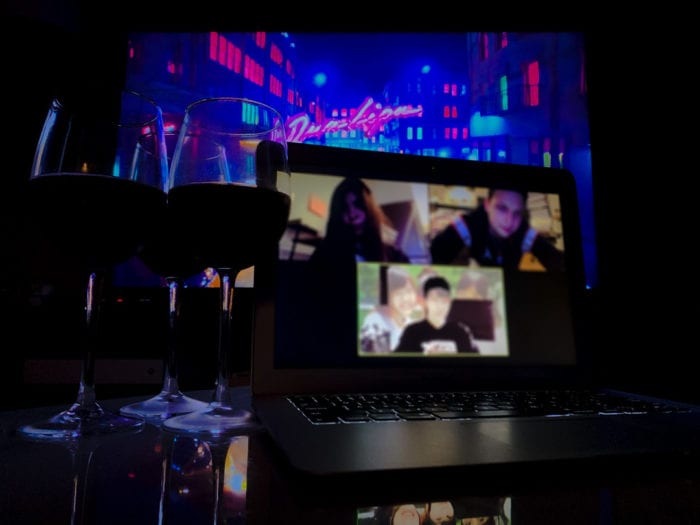
The street outside the window seems desolate. But life inside the Boston apartment is in full swing. The lights are dimmed; vibrant vibes fill the air. The laptop is set on the coffee table beside the flat-screen TV, sparkling with favorite music videos. Frozen rosé ice cubes slowly melt in shiny glasses, waiting for a splash of sweet sangria.
There are no work meetings or classes on this Friday night, but Zoom is on. Roommates Will Wachter and Patrick Hanbury, students of Northeastern University, and Vi Le, a researcher from New York, are sitting on the couch, waiting for their friends to connect. They are hosting a party tonight—virtually.
With the rapid spread of a grim pandemic, many are locked inside houses and apartments, consigned to quarantine and social distancing. But we are social creatures. We miss our family, friends, and beloved ones. We want to see and talk to them. Wachter, Hanbury, and Le had that motivation in mind.
“We were all missing each other, and we were like, we should just have a little party over Zoom and talk with each other, play some games,” said Wachter, 22, a senior studying bioengineering.
Virtual parties have become the rage during the pandemic, on social media like Skype, Duo and Facetime. Zoom, developed to be a vehicle for staid business conferences, is now a popular platform for online frivolity.
While waiting for their guests at the virtual party, Hanbury and Watcher play guitar. They sing to the sweet tunes of classic karaoke songs like “Sweet Home Alabama” and “Country Roads” as familiar faces start to pop up one by one in the tiny Zoom windows. First, Nelly Lin followed by Natalie McGowan, then Mahmoud Ashur, Aashna Shah, Noelle Gilster, and, finally, Saif Billah. All are friends from college, now scattered across the globe.
Some call from New York, others from Baltimore and even China, yet now they are separated only by a thin glass of the screen. They are all together, like in good old times. And it doesn’t feel weird for party-goers; they can’t hide their excitement under broad smiles. The party is on.
“It wasn’t weird. I think it worked. Obviously, it’s better to be with people in the same room. But I think this is a good way to hang out with friends when you’re not with them,” said Hanbury, a senior studying physics with computer engineering.
Psyched to finally talk with each other, people can’t stop chatting and cheering in the long-awaited meeting. After about half an hour of catching up, everyone settles down to play the game called Contact. “Contact is kind of like charades but without losers sitting out,” said Hanbury. “There is no game board or anything, and you just play by talking with each other.” Perfect for virtual playing, the game requires at least three participants. Someone comes up with a word, and others try to figure it out, with progressively more revealing clues.
The game turns out to be a winner, even more so when it becomes a drinking game. “My roommates and I were drinking anytime someone would get the next letter of the word. We ended up getting kind of what lit,” said Wachter
A couple of hours later, no sangria nor rosé ice cubes are left in shiny glassware on the coffee table. It’s late and time to say goodbye. People gradually start disappearing from tiny Zoom windows, exchanging touching farewells. The laptop’s lid is now closed, and the life in the Boston apartment comes back to solitude.
Reflecting on the experience, Wachter said, “Learning that my international friend, Mahmoud is still in Boston and all of his roommates left was pretty sad. I don’t want my friends to go through this alone.”
“And that’s what virtual parties are for—to check up on friends and cheer each other up,” added Hanbury.
